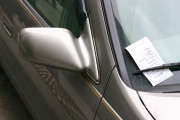No homeowner in the history of dust has likely ever said, “I will never have to dust again.”
It accumulates pretty much everywhere: on the top of ceiling fan blades and light bulbs, the TV screen, that top shelf you never clean. And you’re never really done with dusting; you just stop for a while to go live your life and resume it later.
And it may not seem like a financial issue, but you could spend a fortune fighting dust, or it could cost you if were to list your house for sale without dusting it first.
If you’re discouraged in your fight against grime, dust yourself off and check out some of your potential weapons, from pretty cheap to pretty pricey. What’s the best way to fight dust, and how much can you or should you spend?
[READ: Places You Forget to Clean in Your Home]
A Cheap and Effective Way of Fighting Dust: Cloths
Cost: A few bucks to maybe $20, depending how many you purchase at once.
Why they are effective to fight dust: They’re only really effective if you buy microfiber cloths, according to experts. Their electrostatic properties attract dust and hold onto it, preventing it from resettling on surfaces.
“When using microfiber cloths, ensure they are clean and dry, as dampening them slightly can improve their dust-attracting capabilities,” says Hashi Mohamed, a co-founder of Ivy Cleans, a cleaning and lifestyle solutions company in Minneapolis. https://www.linkedin.com/in/mohamedhashi/
Michael Rubino is also on board the microfiber cloth train. “This is an absolute must for dealing with dust,” says Rubino, founder of HomeCleanse, a mold remediation services company; he is also president of Change the Air Foundation and host of the podcast “Mold Talks.”
“They’re 100 times better at wiping away small particles than regular rags, so using a slightly damp microfiber cloth will actually remove that layer of grime,” Rubino says. “They’re also incredibly affordable and can be washed and reused.”
If you’re using one for mold, however, Rubino says, throw it away afterward to avoid spreading the mold elsewhere.
It’s worth noting that mold is not dust. A moldy home probably has dust in it, and a dusty home may have mold, but they’re two distinct issues. Mold is a fungus that can grow and spread through a house, and it can be incredibly difficult and expensive to remove. Dust can’t grow and spread, but if you don’t dust, piles of dust will grow as a room will get dustier and dustier. However, with enough microfiber cloths and patience, you can get rid of most of your dust.
Skip: Some of the other items you probably have used to wipe away dust. “Don’t waste money on regular rags, a feather duster or extra paper towels,” Rubino says.
[READ: How to Clean Your Dryer Vent]
Another Cheap and Effective Way of Fighting Dust: Air Filters
Cost: Maybe $10 or $20 or more, depending on factors such as the brand and how many filters are in the pack.
Why they are effective to fight dust: If you never change the air filter in your HVAC system, it works harder, and eventually it may stop working.
“The single most effective change homeowners can make to their HVAC system to keep dust at bay is to regularly replace or clean the air filters,” says Brad Roberson, Hewitt, Texas-based president of Aire Serv Heating & Air-Conditioning.
How do air filters help with dust? “Clogged and dirty filters restrict airflow, causing dust and contaminants to circulate within the home,” Roberson says.
But with regular filter replacement, Roberson says homeowners will significantly reduce the amount of dust entering their living spaces. And it should also lessen the odds of an HVAC system failing because it has a year’s worth of dust caked on the filter. Generally, air filter manufacturers recommend you change your filter every one to three months.
Skip: Getting any filter that isn’t an HEPA filter. HEPA is an acronym for high-efficiency particulate air.
“HEPA filters are known for their exceptional ability to trap fine dust particles and allergens, promoting cleaner air quality and reducing dust accumulation within the home. It’s a reliable choice for those seeking a dust-free living environment,” Roberson says.
Kind of Expensive but Effective: Vacuum Cleaners
Cost: Vacuum cleaners can be found for under $100, but you can pay more than $1,000 for one. Expect to be pay several hundred dollars for a really good vacuum cleaner.
Why they are effective to fight dust: Both Mohamed and Rubino advise choosing a HEPA vacuum cleaner.
“These vacuums use filters that meet strict HEPA standards, trapping particles as small as 0.3 microns,” Mohamed says.
While a HEPA vacuum may be a bit pricey, Rubino says the filtration capability is absolutely worth it to remove dust and smaller particles.
“Just make sure to go with a vacuum that has a sealed system so that particles cannot escape before they’re filtered out,” he says.
Skip: A vacuum cleaner that doesn’t meet HEPA standards. Some subpar vacuum cleaners can actually spread dust around.
Also Kind of Expensive but Effective: Hire Professional Cleaners
Cost: It varies, depending on several factors, “including the size of your home, the frequency of cleaning, and your location,” Mohamed says. “On average, you can expect to pay anywhere from $25 to $50 per hour for a cleaning service. A weekly or biweekly cleaning session for a standard 3-bedroom home can cost between $100 and $200. However, prices may be higher in areas with a higher cost of living.”
Why they are effective to fight dust: For starters, maybe you can’t do it all. If you have a full-time job and kids or pets or both, you may find yourself constantly losing the battle to dust, dirt and grime. That’s where a professional cleaning service coming into your home weekly or monthly and dusting could be a big help, if you can find room in your budget.
Skip: Not cleaning. Somebody ought to do it, whether it’s you or a cleaning service. According to the National Art Duct Cleaners Association, the average home collects as much as 40 pounds of dust in a year. That isn’t just dead skin cells you’re breathing in but also human hair cells, pet dander, fragment particles of clothing and furniture, dust mite droppings and dust mite body fragments.
Expensive but Effective: Whole-House Air Purifier
Cost: A whole-house system could cost several thousand dollars, although you can find them under $1,000. A high-performance system will likely require installations by an HVAC professional.
Why they are effective to fight dust: It’s in the name: A whole-house air purifier is a purifier that cleans the air throughout the whole house.
“This is what I consider an absolute investment in healthier air quality,” Rubino says. “While cleaning is a great way to decrease dust, an air purifier will actively work to remove dust and other contaminants from the air so that they don’t get the opportunity to settle on surfaces or make their way into our bodies.”
He adds that smaller air purifiers work well for apartments and specific rooms, but a whole-house air purifier is the best choice if you want to keep an entire house free of dust.
“Essentially, it turns the HVAC system into an advanced filtration system. Not only will this purifier remove large amounts of dust in the air, but it will also eliminate other contaminants like mold spores and mycotoxins,” Rubino says.
Skip: Any whole-house air purifiers that seem like they’re on the cheap side. “I often see people waste money on air purifiers that do not have the technology required to actually cleanse the air. They’ll simply blow those smaller particles back into the home,” Rubino says, adding: “Air purifiers should at least meet HEPA status, but the smaller the particles they can remove, the better the air quality will be.”
Also Expensive and Effective (Maybe): Cleaning Out Air Ducts
Cost: $450 to $1,000 per heating and cooling system, according to the Environmental Protection Agency’s website.
Why they are (maybe) effective to fight dust: According to the EPA, you should have your air ducts cleaned out if you’ve spotted mold growing on your ducts or other components of your heating and cooling system. And the EPA recommends an air duct cleaning if you can see that ducts are clogged with a lot of dust or debris and you can tell it’s being released into your home. But the EPA website also says, “Duct cleaning has never been shown to actually prevent health problems. Neither do studies conclusively demonstrate that particle (e.g., dust) levels in homes increase because of dirty air ducts.”
Skip: Swearing off duct cleaning forever. You may decide not to do it as regularly as an air duct cleaning company would suggest, but that doesn’t mean you should never do it. As the EPA website states, “You may consider having your air ducts cleaned simply because it seems logical that air ducts will get dirty over time and should be occasionally cleaned.”
More from U.S. News
The Best Indoor Plants for Every Room In Your House
How to Reduce Your Home Heating Costs
Furnace Replacement: How Much a New Furnace Costs
At War With Dust? It?s Going to Cost You originally appeared on usnews.com







